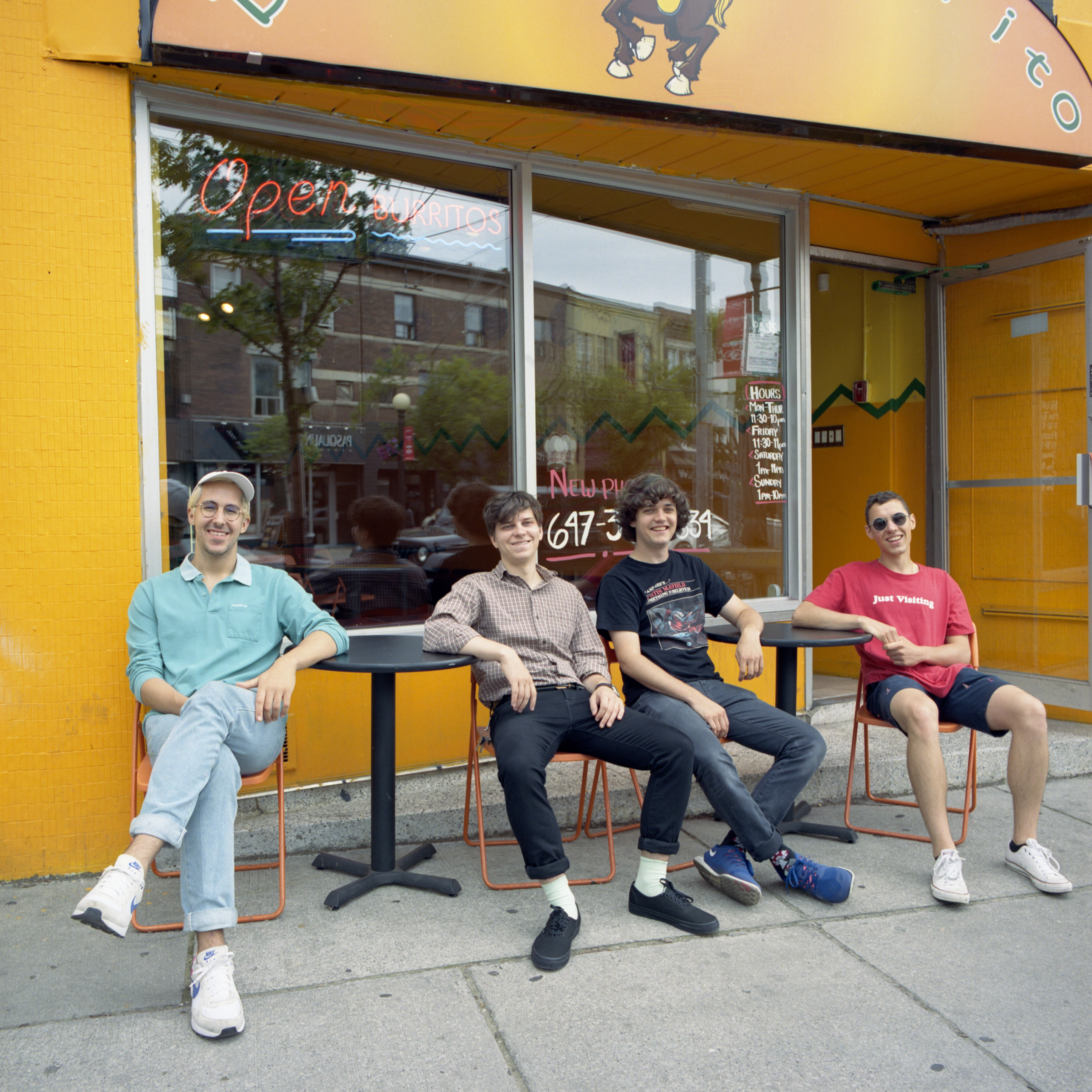On their previous album, all initial collaborations with Ghostface Killah were done electronically; a back and forth of emails and file swapping. For ‘IV’ an altogether different and more physical approach was taken with all collaborators travelling to the band’s studio in Toronto to work on the songs. It was this set-up that led the flow and feel of the record much more than any set-out agenda or initial concept, as Sowinski points out. “We used the physical studio vibe to create a cohesion,” he says, “to work on it step-by-step together and to get how it feels having the vocalist or musician play right there – to share a vision. It’s really important and it’s a totally different feeling on this record because of that.”
Of selecting who to work with on ‘IV’, I ask the group if there was a hit list of people they wanted to in the room. “The only person on a hit list, so to speak, was Colin Stetson,” Sowinski says, adding, “I went to high school with Charlotte Day Wilson; Sam Herring we did a Future Islands remix of previously so we were in touch; Mick Jenkins we knew and Kaytranada is a good friend of ours who we’ve been doing music with for the last year and a half – we’ve done tonnes of stuff with him, so having him on the album for a song and having him contribute percussion and synth lines and picking his brains was super essential.”
The role of Colin Stetson in the process and his inimitable saxophone blasts was a particular scoop for the band. “It was a huge honour for us to work with him,” says Hansen, and Whitty – himself a saxophonist – also echoes these feelings: “That was really amazing, for me. I’ve been listening to him his entire career; I’m a huge fan of his. He has just completely changed the approach of how he interprets the saxophone and it was really amazing to stand beside him and be there for his whole process.” He then continues to explain what he got out of seeing Stetson play up close. “His general stamina to playing too, he’s a super healthy, fit and active guy. Which really reflects in the way he plays – it’s a sort of necessity for how intense everything he does is. When you see him live it’s almost like everyone is experiencing that with him to a certain extent. At the end of the song when he takes a huge breath, it’s like a huge gasp for everybody in the room too.”
So, from experimental saxophone players to electronic producers, to hardcode rappers, to pop singers, I ask what is the essence at the heart of successful collaboration in the world of BBNG? “It has to be someone we can get along with in a lot of different settings, to have a good time with them,” Hansen says. “There’s a million super talented musicians out there but finding someone you resonate with, there’s not. We’ve been lucky with everyone we’ve met. Sometimes it’s intimidating when dealing with someone of a certain stature or certain abilities, there are always nerves, but you just have to try and connect with them on a personal level and concentrate on making music. We have been pretty lucky. There have been some things that have fallen through, even just in the meeting stage, but that stuff is out of our hands. I can’t ever think of a time in which we’ve gone in the same studio as someone and it’s not worked out. Which is super lucky.”
Whilst the group came to notoriety through their interpretations of other people’s songs, this aspect of their output is restricted purely to live sets these days. Often to make up for the lack of physical presence of vocalists on certain songs they choose not to perform without them. “I think we’re really focusing on keeping things original at this point. The covers we have been doing are just a fun aspect of the live show that the audience can latch onto if they know the songs,” says Whitty. “From a production standpoint we’re definitely focused on just coming up with new ideas right now.”
So, as the group continues to press forward, it leaves the inevitable question of who else are they looking to work with in the future? “I feel like jazz seems to be on the rise right now in terms of popular music,” says Whitty, “especially through people like Kamasi Washington and the whole Brainfeeder [Flying Lotus’ record label] family, and they’ve always been a huge inspiration for us, so I think working with anybody like that – Flying Lotus, Thundercat – would be really amazing. Then shooting even higher, I’d say someone like Frank Ocean would be really cool to actually write with.”
